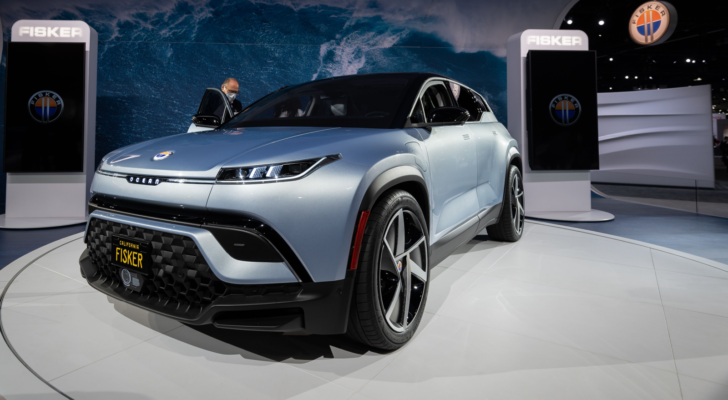Steer Away: 3 EV Stocks Risking More Losses
When it comes to EV stocks to sell, there are the Haves and Have Nots. The Haves make money from their EV businesses. The Have Nots lose money. It’s much easier to recommend stocks to sell from the Have Nots than those to buy from the Haves.
Even a company like Tesla (NASDAQ:TSLA), which is a Have, generating an operating profit of $8.9 billion in 2023, isn’t a sure thing given CEO Elon Musk’s alleged drug use. Now, I don’t have anything against the drug use itself — I believe all drugs should be legalized, which I know is controversial for some — when it’s common knowledge that the man is already quite erratic and prone to over-the-top comments, he’s constantly putting the board in a challenging situation.
Some might put Tesla in the sell category as a result. I’m not one of them. It’s still a profitable business with an operating margin of 9.2% despite a big drop in profits due to lower car prices initiated to maintain market share.
InvestorPlace - Stock Market News, Stock Advice & Trading Tips
So, what are the EV stocks to sell? They’re the ones with the biggest losses and smallest cash reserves. Here are three you might want to put at the top of your list list.
Nio (NIO)

Source: Andy Feng / Shutterstock.com
Nio (NYSE:NIO) is the largest of three, with a market capitalization of $10.2 billion. I would be disappointed to see Nio disappear from the EV landscape. It continues to develop some nice-looking vehicles.
However, despite the nice-looking vehicles, it generated a trailing 12-month operating loss of 22.77 billion Chinese yuan ($3.17 billion) through September 30, 2023. Its net cash through September was 6.87 billion Chinese yuan ($960 million), which suggests it’s technically still solvent.
And, of course, the September numbers don’t include the $2.2 billion strategic equity investment it closed in December from the Abu Dhabi government’s CYVN Holdings, a subsidiary of the Abu Dhabi Investment Authority. That’s on top of the $738.5 million it invested in July 2023.
So, why am I suggesting selling NIO stock over another Middle Eastern-backed EV maker, Lucid Group (NASDAQ:LCID)? I think that Lucid’s higher price point works in its favor. While everyone wants Tesla’s market share, not everyone can or will come anywhere close. Lucid management can focus on the 1% who don’t have a problem owning their vehicles.
Nio’s Altman Z-Score — its calculation indicated the likelihood of a company going bankrupt in the next 24 months — is currently 0.53, according to GuruFocus.com. Anything below 1.81 is considered in distress and likely to enter bankruptcy proceedings.
Lucid’s is no sure bet, with an even worse Altman Z-Score of -0.44. However, between its strong backing from Saudi Arabia’s Public Investment Fund and its higher price point, I see its future survival being more certain than Nio’s.
However, if you’re nervous about volatile stocks, neither should be held for any amount of time.
Polestar Automotive (PSNY)

Source: Jeppe Gustafsson / Shutterstock.com
I last wrote about Polestar Automotive (NASDAQ:PSNY) in July 2022. Because the Volvo (OTCMKTS:VLVLY) spinoff delivered its vehicles briskly, it could reach profitability sooner.
Unfortunately, EV hysteria slowed as interest rates pushed higher, forcing car buyers to rein in their enthusiasm for all-electric products, especially ones focused on performance rather than affordability.
In late January, InvestorPlace’s Josh Enomoto discussed the headwinds that forced Polestar to cut 15% of its total workforce. It delivered 54,600 vehicles in 2023, about 6% higher than a year earlier. As Josh suggested, that’s not nearly enough to wow investors.
As a result, it had to go hat-in-hand to Volvo and its parent, Geely (OTCMKTS:GELYY) for additional backing to keep the lights on and the assembly lines running.
At this point, the biggest winners of an EV slowdown are legacy automakers who have plenty of vehicles to sell powered by internal combustion-powered engines.
In the trailing 12-months ended Sept. 30, 2023, Polestar had an operating loss of $936.1 million from $2.83 billion in revenue. That’s a loss of 33 cents per dollar of sales. As a result, it’s got a net debt of $2.02 billion.
Down 68% over the past year, its Altman Z-Score of -1.24 combined with the latest layoffs should give anyone holding PSNY stock plenty of reason to sell now before it goes to zero.
Fisker (FSR)

Source: betto rodrigues / Shutterstock.com
Fisker (NYSE:FSR) is another EV maker I want to succeed. I just know if it’s got the resilience to hang in there and keep bleeding losses, although its Altman Z-Score is slightly better than Polestar at -1.04%.
However, it’s been a long time since I’ve taken a closer look at the maker of the Fisker Ocean SUV, an attractive first attempt by automotive designer and Fisker co-founder Henrik Fisker.
Yahoo! Finance’s Kirsten Korosec reported on Feb. 11 about the more than 100 separate loss-of-power incidents with Fisker Ocean customer vehicles. I live in Canada. You don’t want to lose power when it’s below freezing outside. Truthfully, you don’t want to lose power anytime in any climate.
Korosec reported on a Feb. 9 story from TechCrunch’s senior transportation reporter, Sean O’Kane.
“Problems with the Ocean SUV, however, are not limited to the vehicle suddenly losing power, a review of nearly 200 documents shows,” O’Kane wrote. “Customers have also reported sudden loss of braking power, problematic key fobs causing them to get locked inside or outside of the vehicle, seat sensors that don’t detect the driver’s presence and the SUV’s front hood suddenly flying up at high speeds.”
That last one is not something you want to happen at any time. It’s downright scary, but they’re all serious issues. Maybe Fisker should talk to Elon Musk. Tesla’s been dogged by quality issues for years.
These aren’t things a company struggling to sell vehicles wants to happen.
With nearly $500 million in trailing 12-month operating losses on just $73 million in revenue, it is losing $6.72 for every dollar in sales, making Polestar’s lack of profitability downright hospitable.
FSR is a sell.
On the date of publication, Will Ashworth did not have (either directly or indirectly) any positions in the securities mentioned in this article. The opinions expressed in this article are those of the writer, subject to the InvestorPlace.com Publishing Guidelines.
Will Ashworth has written about investments full-time since 2008. Publications where he’s appeared include InvestorPlace, The Motley Fool Canada, Investopedia, Kiplinger, and several others in both the U.S. and Canada. He particularly enjoys creating model portfolios that stand the test of time. He lives in Halifax, Nova Scotia.
More From InvestorPlace
ChatGPT IPO Could Shock the World, Make This Move Before the Announcement
Musk’s “Project Omega” May Be Set to Mint New Millionaires. Here’s How to Get In.
The post Steer Away: 3 EV Stocks Risking More Losses appeared first on InvestorPlace.
